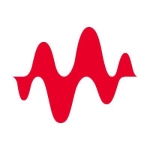What is our primary use case?
I work in the wireless team in the HQ, we don't visit the sites. We mainly provide remote support, design and validation. We bought the G2 to understand how the new functionality work (we already had the previous generation Aircheck) and to train our implementation and support teams to troubleshoot with it whenever there is an issue.
Right after buying the tester, we created a guide for our internal use, and then I distributed the guide to our support engineers. Now, they have their own G2 testers and, whenever in the field, they follow my guide and troubleshoot the issue while I can see the test report in Link-Live cloud portal and evaluate the results remotely. We currently have four devices. Each device is assigned to a support team, and each support team has five or six people.
Generally, the most common issue we encounter is an access point going down, meaning no coverage. Some of our sites have also specialised IoT devices that are very sensitive to interference on 5GHz channels so, being able to see the interferers on the G2 is a massive help.
How has it helped my organization?
With a laptop, you need to install different software packages and not all such software gives you the same information as the G2; you need more than one software solution to match the same capabilities. With the Aircheck, you go and you have everything in one device.
For example you need a packet capture software (and dedicated hardware if you don't have a Macbook) and something for signal strength. With the G2, you have a lot of tools in one package. Not to mention that you can connect the G2 to a wired port and conduct a basic cable test. We were using at least two or three other tools to identify issues before we had the G2. While having one tool instead of many hasn't really affected our cost of troubleshooting, because many other tools are free, the time and the complexity have been greatly reduced for sure.
You don't need to be an expert to use the tool. A person who is not an expert in WiFi might not know the meaning of signal strength and what is a good value or a bad value. With AutoTest you have a very simplified view. This is fantastic because, while the support guys might not be able to resolve the issue, they can at least point more senior people in the right direction. And that saves a lot of time.
It's very good that everything is saved in the cloud. You have historical data and you can and say, "Okay, well on that day we had this issue and today it's this other issue." You can identify a trend.
And it has reduced troubleshooting time by 50 percent. I can definitely see an advantage with it.
I use it sometimes when I want to quickly see the MAC address of a wireless client. With the AirCheck, it is really a 30-second job. If I had to do it with a laptop, it would take at least five minutes. You can pinpoint a particular client and see which access point it is connected to. You can do a packet capture. You can do a lot of stuff. Everything is linked and that's very good. If I had to do it the old-fashioned way, I would need software to find the MAC address, then log in into the controller, see which access point it is connected to, then do a packet capture with different software. It would be a much longer process. The AirCheck has definitely made me more productive.
What is most valuable?
I like everything in the G2. Compared to the old AirCheck it is a massive step forward. I like the cloud functionality. That's very useful because somebody can go onsite, someone who is not really skilled, and I can see the test results from the office. This is my favorite function.
I also like the remote session and the ability to log in to the device remotely. You can log in to the tester with your computer and can see the screen and operate the tester remotely. This is a very cool function, but it's very advanced. And I think you need to be connected with a cable to do that. But it is still a very good function because you can give the tester to level-one support guys and, even if they are not wireless experts, in the worst case, you can operate the tester remotely from the office.
I also like the packet capture functionality. It's very good. While you are onsite and troubleshooting the signal, you can identify a particular client and start a packet capture. And you can download the packet capture from the cloud; that's a new development. Before, you had to download it manually. Now it's on the cloud as well.
The solution’s one-button AutoTest feature to identify common problems is good.
What needs improvement?
With the solution’s one-button AutoTest feature, not all the information is particularly useful. It could be improved with a bit of artificial intelligence saying, "Okay, the G2 sees this problem, maybe this could be the issue," and it would give some suggestions. Right now, when you do the AutoTest you get a bunch of data, but you still have to do some analysis. If you look at some wireless vendors, when there is a problem they give you serious correlation possibilities. For instance, if there is a low signal, it might be due to this or that. You have an idea of where to start your troubleshooting.
Additionally, it would be a huge boost if the AirCheck could be used for site surveys, a bit like the Ekahau Sidekick. I think this feature is coming, but -in general- more functionality towards surveying (for example turn the G2 in a survey access point) would be useful.
Also, we use 802.1x authentication for the corporate network so, to onboard the G2 I need to download the certificate onto the device. It would be nice to have this functionality through the cloud as well. Right now, you need to do it through the software (windows only) by connecting your laptop physically to the AirCheck. This is one aspect that could be improved. Lastly, many companies are worried about the security of data in the cloud and SSO through API integration is the norm today. I found Link-Live API support it a bit lacking on this side. So far, we haven't been able to integrate it into our single sign-on procedure.
For how long have I used the solution?
I have been using AirCheck G2 for one year.
We bought it a year ago and then we required our support team to buy it as well as part of their standard toolset, so it's still kind of new in terms of our usage. They haven't explored all the functionalities of the tester yet. It has a lot of potential, but it is still not used 100 percent.
What do I think about the stability of the solution?
I haven't had any issues so far. It's always been super reliable.
What do I think about the scalability of the solution?
It probably could be scalable, but that would be a strategic decision of the vendor. I guess some features are locked and it depends on the firmware release. I think the device can do more, hardware-wise. It could be that they are testing new features before releasing them. Potentially, it is scalable, but not massively scalable, otherwise people wouldn't buy the bigger brothers, the OneTouch or the EtherScope.
How are customer service and technical support?
I haven't dealt much with the technical support. The tester has been reliable.
I have only enquired once about API integration and they did reply quite fast. During the transition when NetAlly took over Netscout there was a bit of delay with support responses. Now, it should be fine.
Which solution did I use previously and why did I switch?
We had the old AirCheck, the one from Fluke Networks. But the G2 is a huge move forward.
How was the initial setup?
If you know what you're doing, it's not that difficult. If you don't know about certificates and advanced wireless stuff, it can be a bit difficult.
Less experienced users might need guidance in order to take full advantage of the tool, that's why I created a step-by-step guide for our internal use.
It would be good to have a series of tutorials, some videos, and a properly structured course. If you work in the field, you don't have time to read a PDF guide. A series of videos "from A to Z", to explore all the menus, sub menus, and use cases, would be useful. It is especially important to explain how to read the results. For example, what does it mean that this device has this signal rather than that signal? What are the implications?
What about the implementation team?
We did everything in house.
What was our ROI?
For a big company, there is a slower return of investment because, in a big company, it doesn't really matter. At $2,500, it is no big deal. For a consultant, it is a huge value because your time is money. It sounds like a paradox, but -in my opinion- for a smaller company there is a better return on investment than for a big company.
In a big company, if there is an issue with the WiFi, the support team can work on that ticket for one week as priorities changes all the time. So if it takes a week or, say, three days to solve an issue, it might go unnoticed in some companies. In big environments time is stretched somehow. But for a small company with limited man power, time is everything. You show up on a site and troubleshoot issues very quickly. You could finish the job in one hour instead of three hours and move to the next customer. It's a massive return on investment.
What's my experience with pricing, setup cost, and licensing?
It is a bit expensive, to be honest. For a big company it's not a big deal. But for a small firms, like a wireless consultant or small IT support company, it is hugely expensive and that's a shame because it is a fantastic tool.
Netally have a unique position in this market so I guess they can do whatever they want. Fair enough.
Because I work in a big company, it is a no-brainer. The yearly maintenance fee is okay; if I were a consultant, I would still buy it, but it would be a huge investment. Overall, it's a good tool to have.
Which other solutions did I evaluate?
We tested something from JDSU, which is slightly different. Really, there is nothing on the market like the G2 (apart from other more expensive testers from the same company).
What other advice do I have?
I have learned that I can use G2 for more than I thought. Initially I thought, "Okay, I can go and check the coverage." But actually, there are so many things you can use it for. Sometimes you quickly need the MAC address of a wireless client. You take the G2 and you see that straight away. That's one of my favorite things. It's like having a multi-tool. We often use it for quickly finding information while we are doing other tasks, things that are not necessarily support. Suppose we are testing a new access point and it is mounted on the ceiling and we need to get its MAC address quickly. It's quicker to look at the G2 than to log in the controller (or use a software scanner) and find the MAC address.
We also bought the LinkRunner testers and we use them a lot. I was also looking at the OneTouch because at one point I was approached by a vendor that was offering a massive discount (it was going end-of-life) and it was a very attractive price. The OneTouch, from a wireless perspective, does more or less the same thing as the G2; I couldn't justify this expense to my manager.
As far as maintenance of the G2 goes, it's very easy. You don't need to know anything, other than checking for software upgrades. I believe you still need a laptop to upgrade the firmware, unless they've changed something recently.
Disclosure: PeerSpot contacted the reviewer to collect the review and to validate authenticity. The reviewer was referred by the vendor, but the review is not subject to editing or approval by the vendor.






